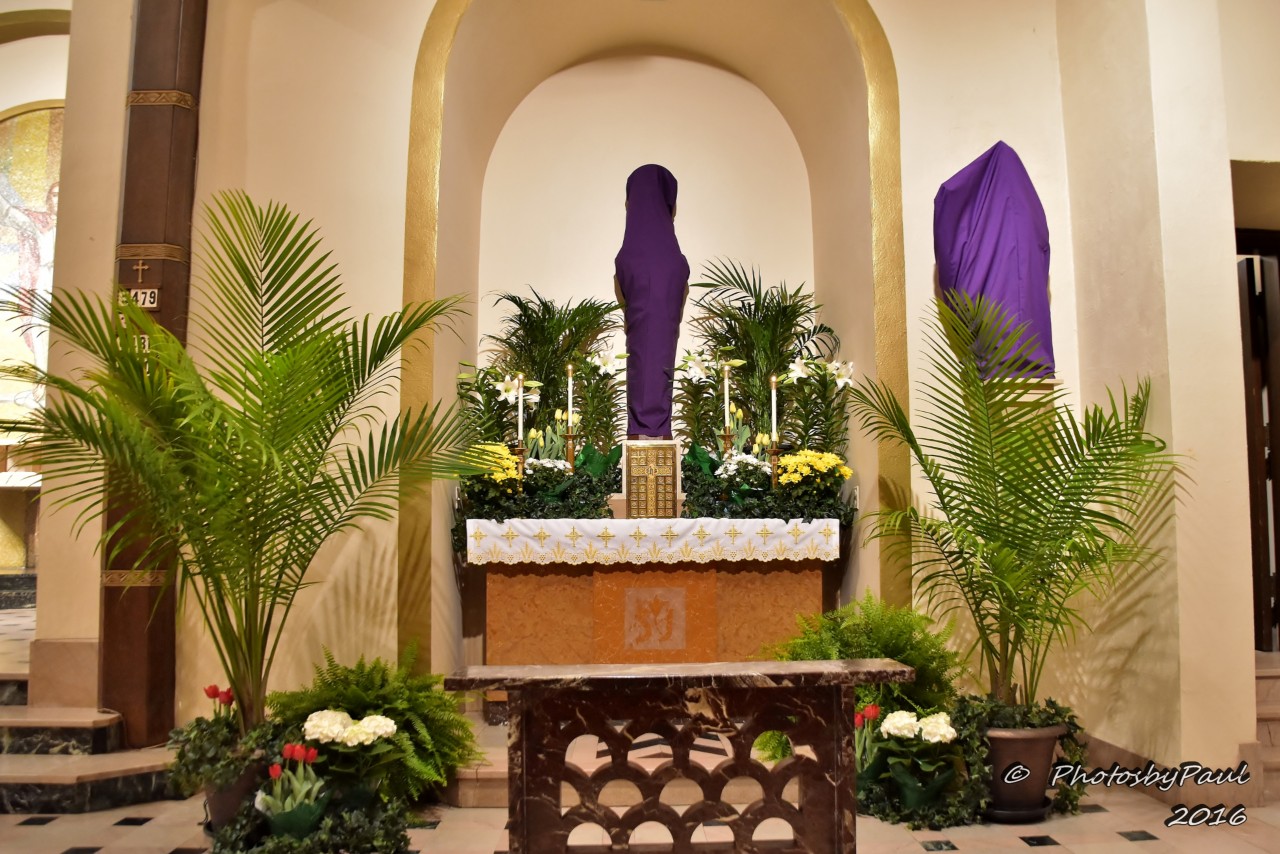The custom of covering the crucifix and other images in the church with purple veils occurs from Passion Sunday, the fifth Sunday of Lent, until Holy Saturday is in common place today.
After the custom of public penance fell into disuse and the entire congregation was symbolically incorporated into the order of penitents through the imposition of ashes on Ash Wednesday, it was no longer possible to expel them from the church and so instead the altar, or “Holy of Holies”, was shielded from view until they were reconciled with God at Easter.
Later on in the Middle Ages the images of crosses and saints were also covered from the start of Lent.The custom of limiting this veiling to the last two weeks of Lent, appears in the Ceremonial of Bishops in the seventeenth century. The great nineteenth-century Benedictine liturgist Dom Prosper Gueranger gives a mystical interpretation of the veiling, based on the Gospel of St John, which was formerly read on Passion Sunday.
Just as Jesus hid himself from the Jews who wanted to stone him (cf. Jn 8:59), so by the veils he is now hidden from the world in preparation for the mysteries of his passion.The statues of the saints are covered too since, if the Master himself is covered, so should be his servants.
The cross is honoured as the throne of Christ’s victory, with its veiling in Lent it speaks to us of his suffering and humiliation. Another spiritual interpretation of the veiling is based on the fact that in Christ’s passion not only was his divinity obscured but so was, in a certain sense, his humanity. He was so disfigured by the blows and scourges that he was hardly recognisable as a human being.
We read in the prophet Isaiah’s depiction of the Suffering Servant, which has always been taken to refer to Christ: “As many were astonished at him – his appearance was so marred, beyond human semblance, and his form beyond that of the sons of men – so shall he startle many nations” (Is 52:14).
Likewise, we read in the psalm Jesus quoted while he hung on the cross: “But I am a worm, and no man; scorned by men, and despised by the people” (Ps 22:6). So, in a sense, the veil hides Our Lord’s divinity and humanity, as did the wounds suffered in his passion.
Regardless of the original meaning of the veiling of the crucifix and statues, it has much to commend it as a way of helping us prepare for Our Lord’s Passover in the last two weeks of Lent.


